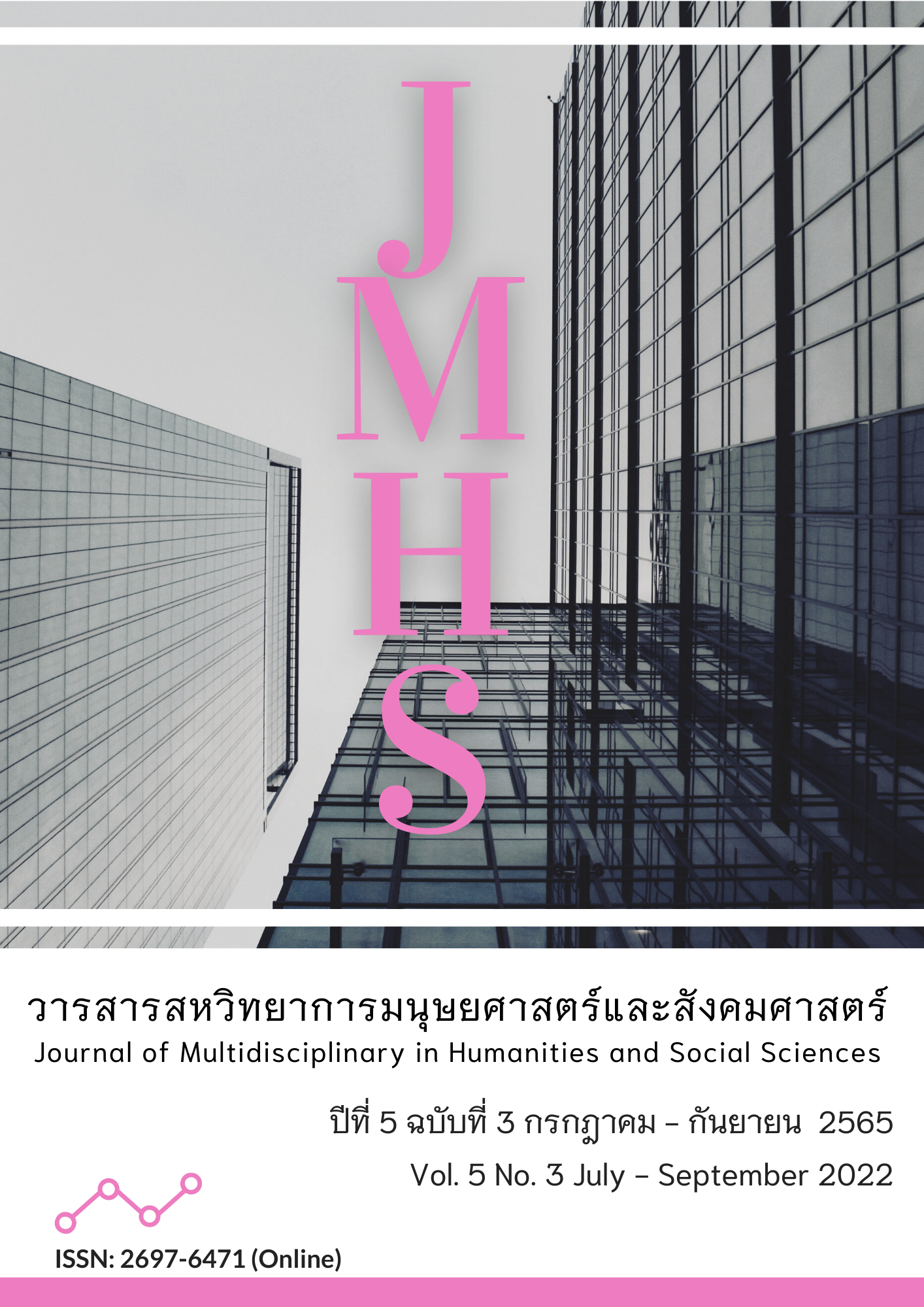The Model of Bilingual (Thai-Chinese) School Administration Under Bangkok Metropolitan Administration
Main Article Content
Abstract
This article aimed to study: 1) the model of bilingual (Thai-Chinese) school administration under the Bangkok Metropolitan Administration; and 2) confirm the model of bilingual (Thai-Chinese) school administration under the Bangkok Metropolitan Administration. The population of this research consisted of 14 schools. There were 15 respondents from each school, for a total of 210 respondents. The research instruments were focus group discussions. The descriptive statistics used for data analysis were frequency, percentage, arithmetic mean, standard deviation, confirmatory factor analysis, and content analysis.
The findings of this study were as follows: 1. The model of bilingual (Thai-Chinese) school administration consisted of five models, which were: 1) planning; 2) organizing; 3) acting; 4) budgeting; and 5) monitoring. 2. The confirmation on the model of bilingual (Thai-Chinese) school administration under Bangkok Metropolitan Administration consisted of 1) planning 2) organizing 3) acting 4) budgeting and 5) monitoring. The model in accordance was fit with the empirical data with (²) = 0.777, (
²/df) = 0.777, p-value = 0.378, (RMR) = 0.000, (GFI) = 0.999, (AGFI) = 0.978, (CFI) = 1.000, (RMSEA) = 0.000.
Article Details

This work is licensed under a Creative Commons Attribution-NonCommercial-NoDerivatives 4.0 International License.
Views and opinions appearing in the Journal it is the responsibility of the author of the article, and does not constitute the view and responsibility of the editorial team.
References
กระทรวงศึกษาธิการ. (2563). Bilingual School โรงเรียนสองภาษา สองวัฒนธรรม. สืบค้นจาก https://www.rakluke.com/learning-all/education/item/bilingual-school.html
เกษรา เพิ่มสุขรุ่งเรือง. (2564). การเสริมสร้างวินัยนักเรียนในโรงเรียนมัธยมศึกษา. วารสารศิลปการจัดการ, 5(3), 645-656.
ณัฐจิรา ธาดาเกื้อกุลวงศ์, ภารดี อนันต์นาวี และ พงศ์เทพ จิระโร. (2564). การพัฒนารูปแบบการบริหารงานบุคคลสำหรับโรงเรียนสองภาษาของโรงเรียนเอกชน. วารสารมหาจุฬานาครทรรศน์, 8(2), 368-369. https://so03.tci-thaijo.org/index.php/JMND/article/view/250514
พงศปณต พรมมา ช่อเพชร เบ้าเงิน และ เปรมจิต ขจรภัย ลาร์เซ่น. (2557). การพัฒนาองค์ประกอบการบริหารโรงเรียนสองภาษาในประเทศไทย. วารสารศึกษาศาสตร์ มหาวิทยาลัยขอนแก่น, 37(2), 68-78. https://so02.tci-thaijo.org/index.php/EDKKUJ/article/view/50795
พรทิพย์ เดชพิชัย, จิราภรณ์ พงษ์โสภา, ณัฐกฤตา สุวรรณทีป, สิรวัลภ์ เรืองช่วย และ เสรี ตู้ประกาย, (2558). การจัดการเรียนการสอนคณิตศาสตร์แบบสองภาษาในโรงเรียนเขตกรุงเทพมหานคร. กรุงเทพฯ: สถาบันวิจัยและพัฒนา มหาวิทยาลัยราชภัฏสวนดุสิต.
พรยุพา ลือสิงหนาท. (2552). การประเมินโครงการโรงเรียนสองภาษา (หลักสูตรภาษาจีน) สังกัดกรุงเทพมหานคร. กรุงเทพฯ: สำนักการศึกษา กรุงเทพมหานคร.
ไพผกา ผิวดำ. (2564). ชุมชนแห่งการเรียนรู้ทางวิชาชีพสู่ความสำเร็จของสถานศึกษา. วารสารนวัตกรรมการจัดการศึกษาและการวิจัย, 3(1), 11-18. https://so02.tci-thaijo.org/index.php/jemri/article/view/250580
ภัทรภรณ์ น้อยกอ. (2562). รูปแบบการนิเทศโรงเรียนสองภาษาระดับประถมศึกษาสังกัดสำนักงานคณะกรรมการการศึกษาขั้นพื้นฐาน. วารสารวิชาการธรรมทรรศน์, 19,(3), 81-92. https://so06.tci-thaijo.org/index.php/dhammathas/article/view/147512
มหาวิทยาลัยธุรกิจบัณฑิตย์. (2564). สถาบันขงจื่อในประเทศไทย. สืบค้นจาก https://www.dpu.ac.th/msrci/about.php
สำนักงานเลขาธิการสภาผู้แทนราษฎร. (2560). รัฐธรรมนูญแห่งราชอาณาจักรไทย. กรุงเทพฯ: สำนักงานเลขาธิการสภาผู้แทนราษฎร.
Likert, R. (1932). A Technique for the Measurement of Attitudes. Archives Psychological, 140, 5-55.
Phumphongkhochasorn, P., Damnoen, P. S., Suwannaprateep, T., & Phoomparmarn, U. (2021). National Educational Standards and the Improvement of Thai Education System with World Class. Asia Pacific Journal of Religions and Cultures, 5(1), 75-86. https://so06.tci-
thaijo.org/index.php/ajrc/article/view/245928


